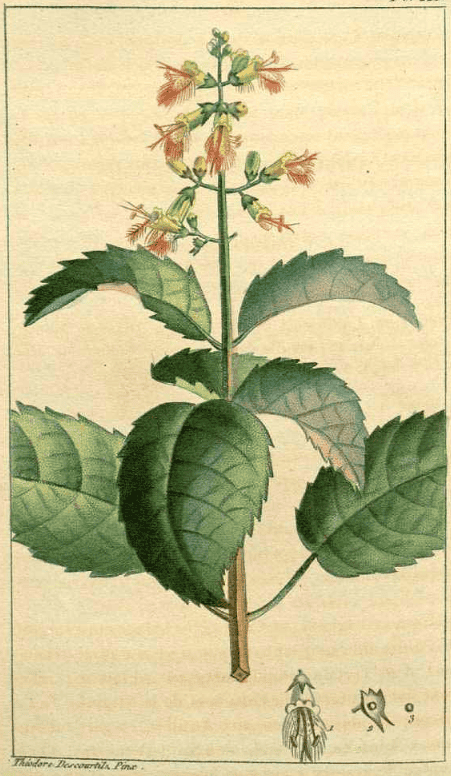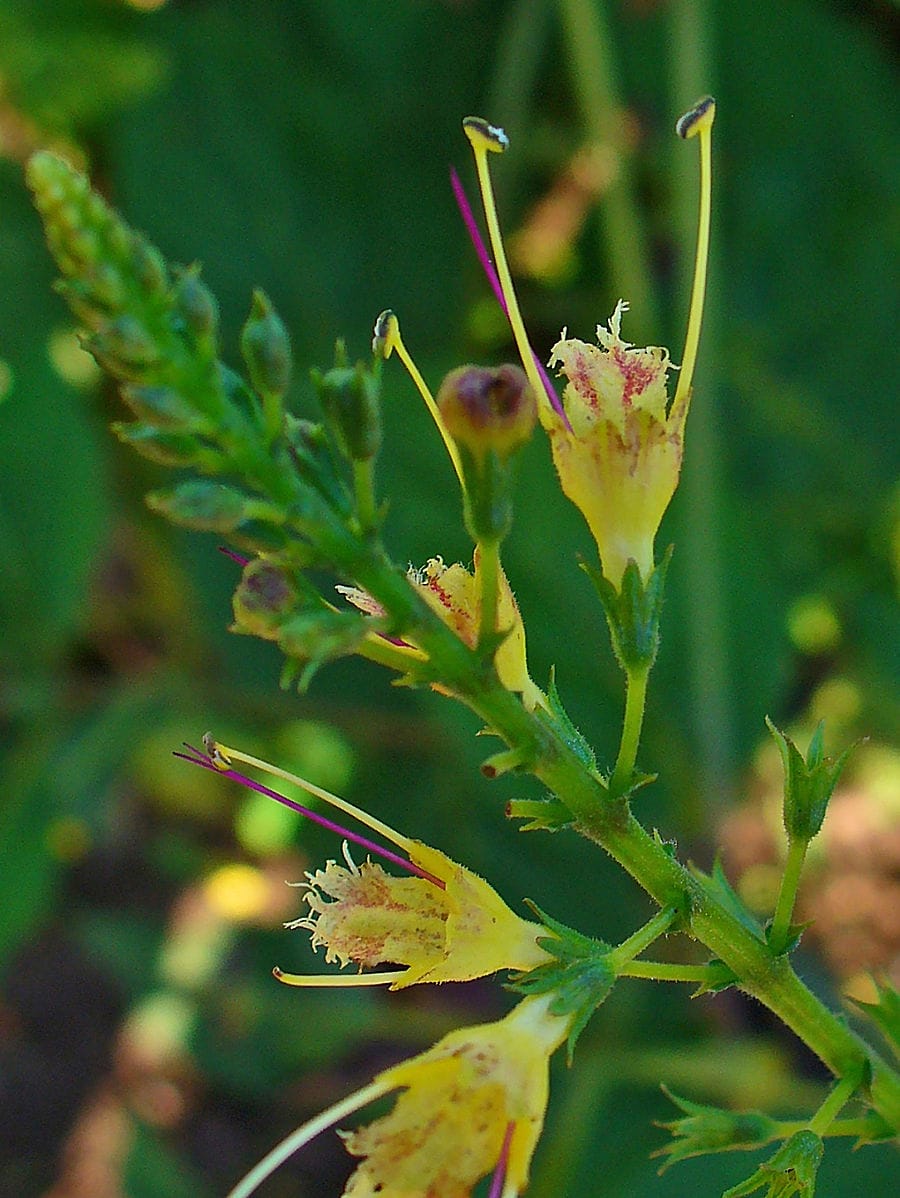Collinsonia, StonerootStone Root |

|
 Collinsonia canadensis
Collinsonia canadensis Descourtilz, Flore [pittoresque et] médicale des Antilles (1821-1829)
 Collinsonia canadensis
Collinsonia canadensis (Photo by H. Zell) (Wikimedia)
Botanical name:
Collinsonia canadensis
Parts used:
Root, Rhizome
Temperature & Taste:
Cool, dry.
Uses:
1. Clears Heat and Damp, Promotes Urine, Clears Stones:
-Edema, Fluid retention, Ascites
-Acute Urinary Tract Infection, Bladder Pain
-Gravel and Stones of the Urinary tract or Gall Bladder (considered Specific)
-used to prevent and treat all types of Stones
-Leukorrhea
2. Clears Heat and Toxin:
–acute Sore Throat, Laryngitis, Pharyngitis
-Cough, Chronic Bronchitis, Asthma (Scudder)
-Boils, Abscesses
-Gastritis, Diarrhea, Dysentery
-‘putrid and malignant fevers”
3. Strengthens Stomach, Benefits Qi:
-‘improving the appetite, facilitating digestion and acting as a general tonic’. (Scudder, Specific Medicines, 1903)
-early American practitioners regarded it as a useful strengthening tonic
4. Clears Heat, Opens Obstructions, Resolves Swellings:
-Proctitis, burning pain of the Rectum
-Hemorrhoids; Scudder said specific for acute, but can cure chronic cases.
5. Externally:
–poultice and wash for Trauma, Bruises, Sores, Wounds
Dose:
Tincture (1:5 in 40% alcohol): 2–8 mls, three times daily
Fluid Extract (1:1 in 25% alcohol): 1–4 mls. (Ecletics gave 1–30 drop doses)
In Decoction: 3–6 grams
Comment:
Scudder (1903) said ‘I regard it as one of the most direct and valuable agents of the materia medica, and one that will give satisfaction to whoever employs it.’.
Main Combinations:
1. Gravel, Stones:
i. Stoneroot, Couch grass
ii. Stoneroot, Pellitory of the Wall, Nettle, Golden Rod
2. Sore Throat, Chronic Laryngitis, Fluid Extract of Collinsonia, Simple Syrup (equal parts), half–1 teaspoonful 4 times daily (Scudder, Specific Medicines, 1903)
3. Proctitis with fullness, burning and throbbing of the rectum, Gelsemium tincture, Stoneroot tincture (20 drops each), Water (6 oz). Mix. One teaspoonful every half hour for two hours ; then a teaspoonful every hour. (Eli Jones)
Major Formulas:
Cautions:
1. Best avoided during Pregnancy and Breastfeeding
2. Overdose (1 and half teaspoonfuls of the powder) can cause nausea, vomiting, colic, headache, dizziness and strangury.
Main Preparations used:
Tincture, Fluid Extract
Tincture:
‘The fresh root is chopped and pounded to a pulp and weighed. Then two parts by weight of alcohol are taken, the pulp mixed thoroughly with one-sixth part of it, and the rest of the alcohol added. After stirring the whole well, it is poured into a well-stoppered bottle, and allowed to stand eight days in a dark, cool place. The tincture so prepared is, after straining and filtering, of a brilliant reddish-orange color by transmitted light; has no characteristic odor, a ligneous taste, and an acid reaction’. (American Medicinal Plants, Millspaugh, 1887)
-
Extra Info
-
History
|
‘The Stone-Root is indigenous to North America, where it ranges from Canada to Wisconsin, and southward to Florida, being particularly abundant in the North, and along the Allegheny Mountains. It habits rich woods, and flowers from July to September. The original specimen of this plant was sent to Peter Collinson, a promoter of science in England, by John Bartram, in 1735; he afterward forwarded it to Linnaeus, who named the species in his honor. Collinsonia was first introduced as a medicine by Schoepf, who praised its virtues in lochial colic, snake-bites, rheumatism, and dumb ague. Rafinesque states that the Aborigines used the plant as a vulnerary, and that Dr. Mease claimed to cure dropsy with an infusion of the root in cider;* he further states that, “in the mountains of Virginia, Kentucky, Tennessee, and Carolina, this genus is considered as a panacea, and used outwardly and inwardly in many disorders; it is applied in poultice and wash for bruises, sores, blows, falls, wounds, sprains, |
contusions, and taken like tea for headaches, colics, cramps, dropsy, indigestion, etc.” Drs. A. French and Beers speak highly of it in pains of the bladder, ascites, and dropsy of the ovaries; also as a powerful tonic in putrid and malignant fevers, and in leucorrhcea. Dr. Hooker judges the principle so volatile that all infusions should be made in a tight vessel. Dr. Scudder speaks highly of the plant in chronic diseases of the respiratory tract, and says that it relieves pulmonary irritation, and acts as a stimulant expectorant. “In irritation of the pneumogastric nerve,” he says, “heart disease, and that peculiarly distressing asthma simulating, and some- times attending, phthisis, it has a superior influence in quieting irritation, giving increased strength to the patient. In hemorrhoids, where there is rectal irritation, with the feces in part scybalous and part semifluid, no constipation being present, it cures in doses of from one to two drops of the tincture in water, three or four times a day.” (American Medicinal Plants, Millspaugh, 1887) |
